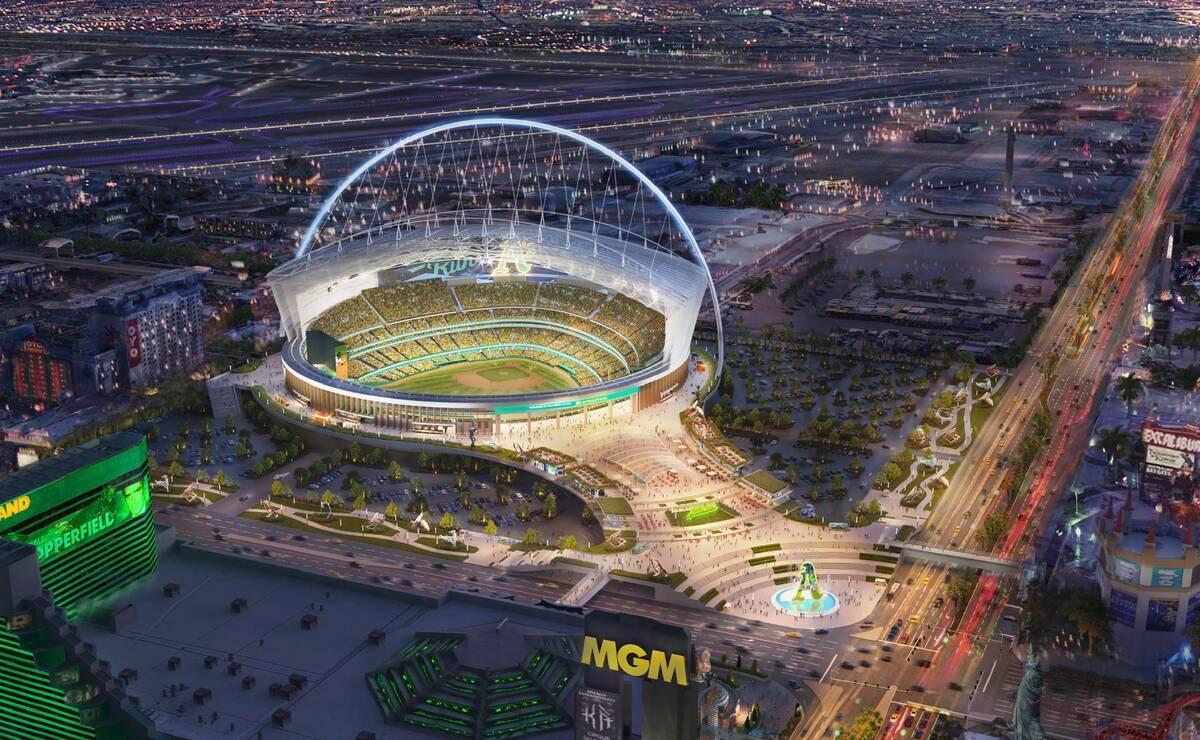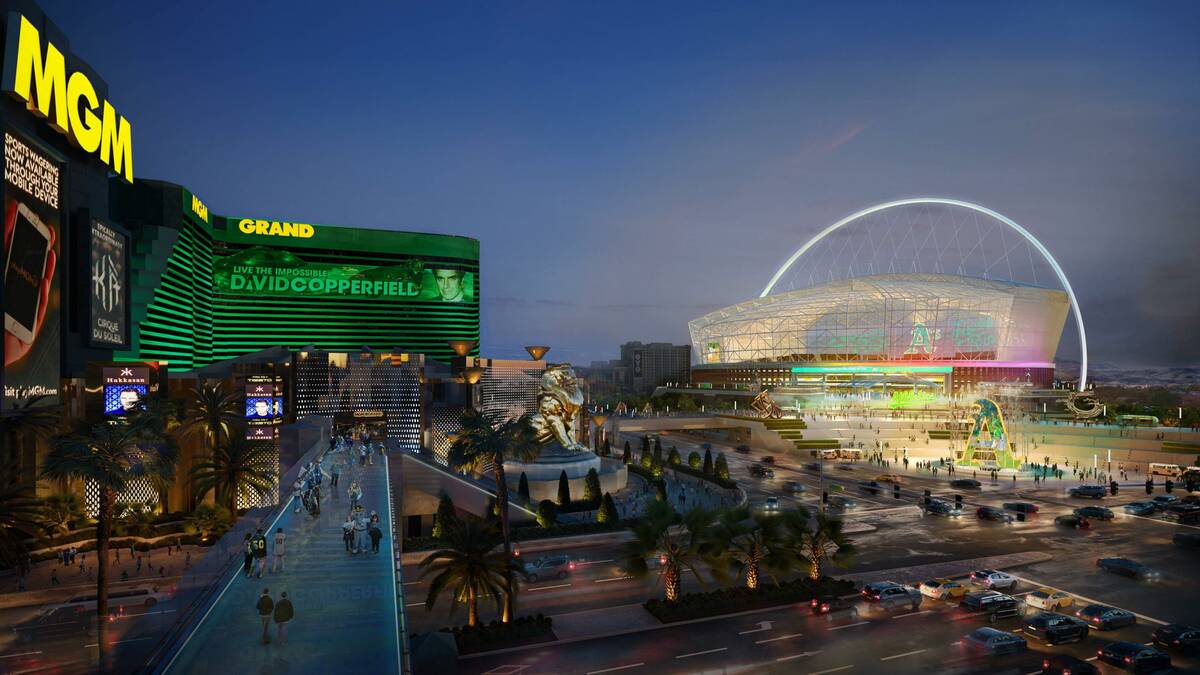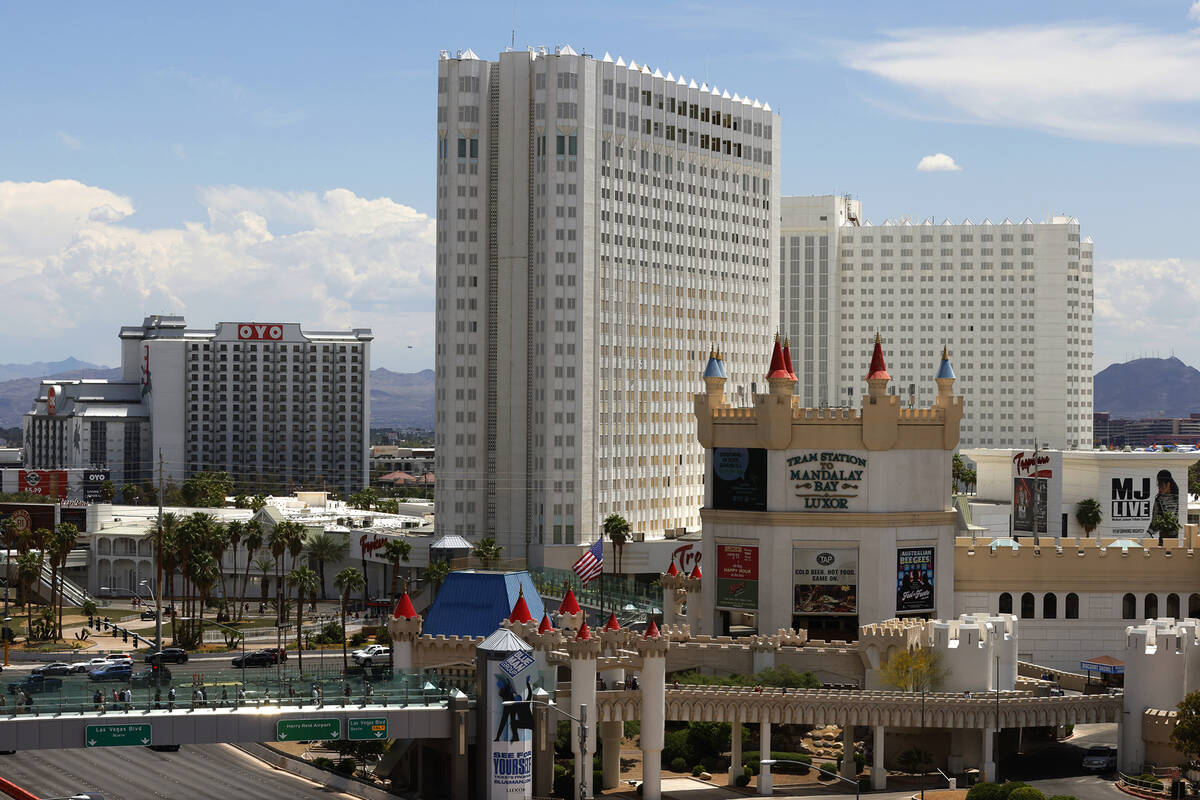Oakland A’s ballpark funding bill introduced at Nevada Legislature
CARSON CITY — A bill to fund the public portion of the Athletics’ stadium was introduced Friday night at the Nevada Legislature, with the plan seeking up to $380 million in tax financing for a $1.5 billion, 30,000-seat Las Vegas ballpark.
Before the bill was officially announced, the A’s released multiple artist renderings of what the planned stadium could look like.
The stadium is set to be situated on 9 acres of land on the southeast corner of the 35-acre Tropicana Las Vegas site.
Fans seated behind home plate will have a Strip-facing view looking toward the outfield, with the back of the stadium facing Harry Reid International Airport.
“From the minute we stepped onto the Tropicana site nearly two years ago, it was immediately obvious what a fantastic fit it would be for a new A’s ballpark in Las Vegas,” Brad Schrock, the A’s director of design and owner of Schrock KC Architecture, said in a statement.
“The natural orientation of the ballpark creates not only some of the best views and connection to the Las Vegas skyline from the seating bowl but also opens up the ballpark to the corner in a way that creates opportunities for an amazing energetic public space with open and expansive views into the ballpark.”
The official introduction of the bill follows Republican Gov. Joe Lombardo announcing Wednesday that state and Clark County officials had struck a tentative deal to bring the A’s to Las Vegas. The deal includes the construction of a $1.5 billion, 30,000-seat retractable roof stadium.
The state would contribute $180 million in transferable tax credits. Of that amount, $90 million would be repaid with tax revenue generated by the ballpark.
Clark County would fund $145 million of the project. Of that total, $120 million would be generated by a special tax district encompassing the stadium, which would be built on 9 acres on the southeast corner of the 35-acre Tropicana Las Vegas resort site. Various taxes generated within the district would repay bonds issued to fund construction. The bonds would be paid back over 30 years.
The county also would contribute $25 million to fund infrastructure improvements on the stadium site for pedestrian and road upgrades, utility enhancements and fire and police.
The tax contribution would be capped at $380 million, depending on when the bonds to fund the stadium construction are purchased and how much interest is charged.
The legislation requires majority support in the Democrat-controlled Senate and Assembly, then the signature of Lombardo.
Lombardo’s signature would not mark the final step in the A’s relocation from Oakland to Las Vegas. Major League Baseball would have to approve the move. However, MLB Commissioner Rob Manfred previously said the league would waive any relocation fee if the A’s finalized a stadium plan in Las Vegas, and he indicated this week that a relocation vote could come as soon as next month.
“We look forward to continuing our collaboration with the Nevada governor, legislative leaders, Clark County commissioners and the Southern Nevada communities as we move forward with plans on our new home,” said A’s President Dave Kaval.
The bill’s introduction comes two years to the week after A’s brass first visited Las Vegas, beginning their relocation search. Less than two weeks remain before the Legislature’s regular session concludes, and lawmakers still must pass the state budget for the 2023-25 biennium.
The NFL’s Las Vegas Raiders received $750 million in public funding to help finance the construction of the $2 billion Allegiant Stadium. Those bonds are being repaid over 30 years by a 0.88 percent tax on Clark County hotel rooms.
The A’s, like the Raiders, would be required to sign a 30-year nonrelocation agreement in exchange for the public financing.
Bally’s Corp. and Gaming and Leisure Properties, Inc., owners of the Tropicana and the land under the resort, entered a binding agreement with the A’s for the 9 acres, free of charge, pending approval of the team’s bill and MLB authorizing relocation to Southern Nevada. That land and the ballpark would be transferred to the Las Vegas Stadium Authority upon completion of construction, making it a publicly owned facility, like Allegiant Stadium.
The A’s pursued a Las Vegas stadium because they weren’t able to replace aging Oakland Coliseum with a new, waterfront ballpark in the Bay Area. If the Las Vegas plan is approved, the A’s would become the fourth major-league sports franchise in Southern Nevada, joining the NHL’s Golden Knights, the WNBA’s Aces and the Raiders.
Kaval noted that this is the first conceptual design of the ballpark and the features could change before construction begins.
“We hope our project goes beyond a traditional ballpark and serves as a catalyst for community development and engagement,” Kaval said. “It follows in the footsteps and success of the professional sports teams that come before us in creating union jobs, stimulating economic growth and fostering investments in the community.”
Contact Mick Akers at makers@reviewjournal.com or 702-387-2920. Follow @mickakers on Twitter. Contact Taylor R. Avery at TAvery@reviewjournal.com. Follow @travery98 on Twitter.

















